|
|
| Пишет kavery ( @ 2007-09-04 15:34:00 |
|
|
|
|
|
|
|
|
|
|
|
|
|
|
Vertumnus and Pomona
Посмотрите на зту картину. На ней изображена девушка и старуха, возможно сводня. Но не все так просто , как кажется на первый взгляд. Обратимся к мифологии.
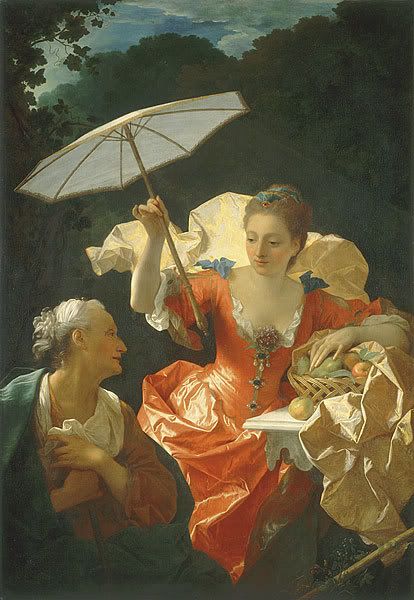
Jean RANC
Девушка - это римская богиня плодов Помона.
А вот старуха.... Это Вертумн - римский бог смены времен года и осеннего созревания плодов, бог превращений и всяческих перемен ( в том числе и изменчивого настроения), который мог принимать любой образ. П У Овидия (см. Метаморф.) встречаем грациозный миф о том, как Вертумн добился взаимности Помоны, остававшейся холодной ко всем лесным ухаживателям. Вертумн прибегал сначала к разного рода превращениям, до старухи включительно, но победил П., только явившись в своем настоящем образе — светлого, как Солнце, юноши.
Сюжет мифа был весьма популярен. Вот еще несколько картин.
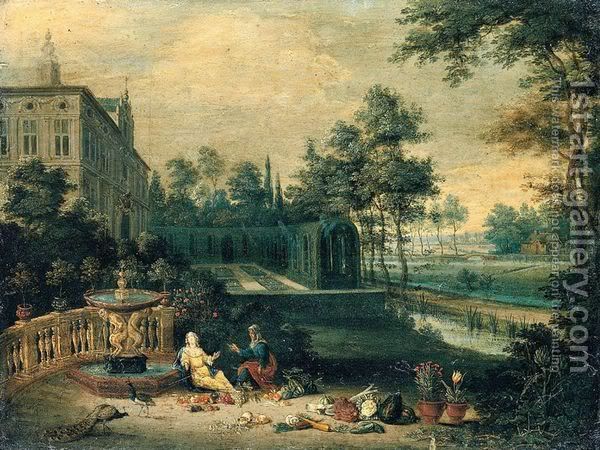
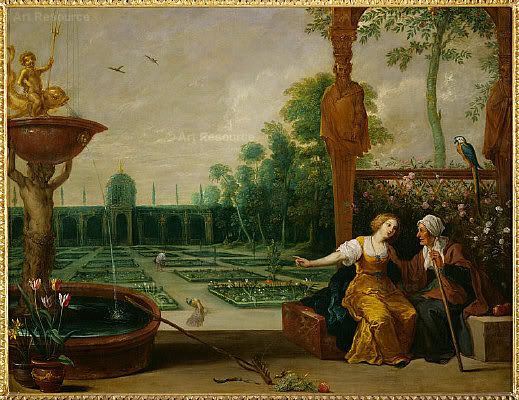
Teniers Davidthe Elder
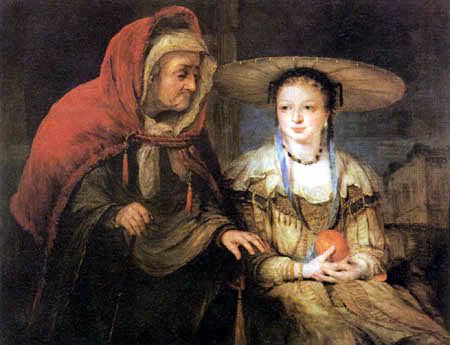
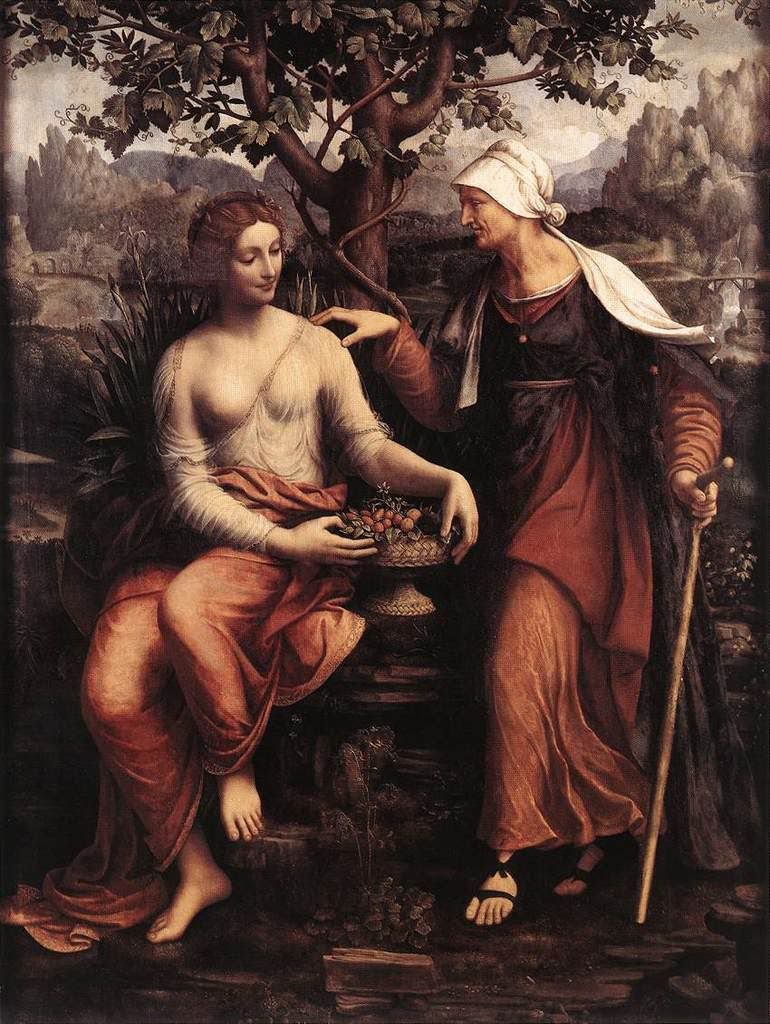
Francesco Melzi.
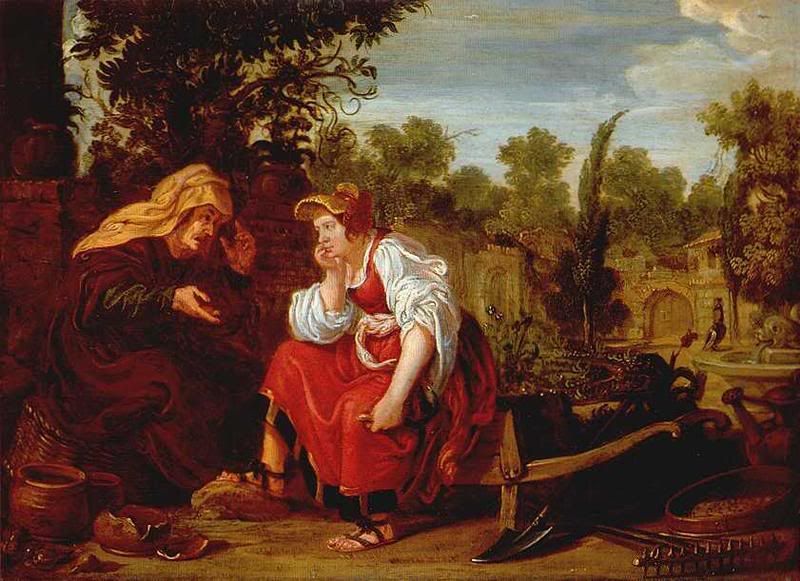
Tengnagel Jan
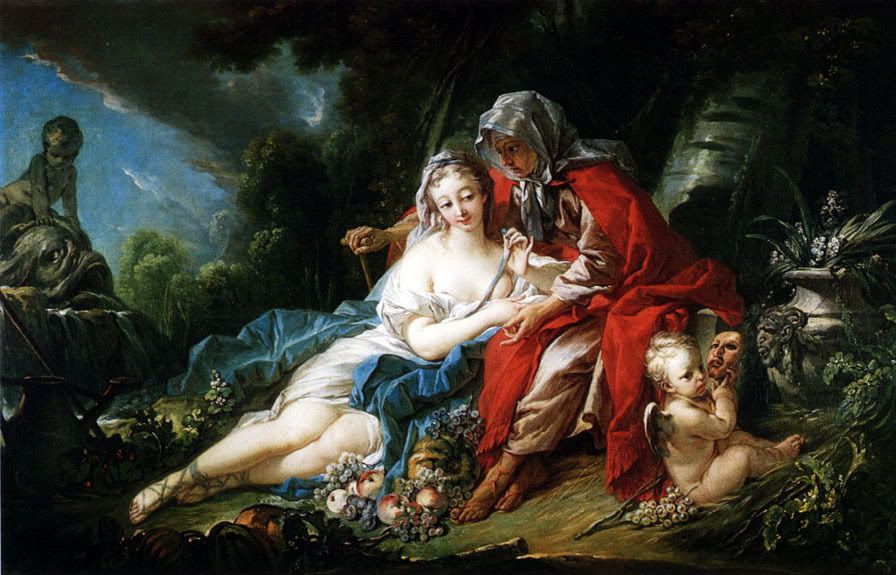
Franois Boucher
In 1748, Boucher received a commission from the Director of the Royal Apartments for a set of paintings representing the four elements. Two were completed. "Arion carried on a Dolphin accompanied by Triton and Nereids and other Sea Gods" represented water. This picture of Vertumnus and Pomona surrounded by trees, flowers and fruits, was to illustrate earth.
The story is a rather obscure one which was given its best known form in Ovid's Metamorphises. It concerns two Roman deities: Pomona a nymph who loved to tend her fruit trees and flowers shut herself up in a garden away from all human and divine lovers. Vertumnus, the god of orchards, desired her passionately and tried various ruses to enter her garden. At last, disguised as a very old woman, he is granted admission, where he begins to woo the nymph by praising her beauty and her fruit.
Passionately he compares his plight with an elm tree which was intertwined with vines bearing grapes. If the tree stood alone, Vertumnus argued, the vine would have nowhere to go and the grapes would be trampled under foot. "You shun marriage and do not care to be wed," so he the god of the orchards cannot bear fruit without her help. His words melt the nymph's heart and they are united.
In Boucher's painting, the symbol of deception, through which love achieves its fulfillment, is the mask held by winged Cupid at his feet. Boucher's inspiration for using this story to represent earth in his commission came from a ballet performed at Versailles in January 1749. Boucher was probably the designer of the sets, and Madame de Pompadour played the role of Pomona. Once again, the features of the beautiful nymph are those of Boucher's patron.
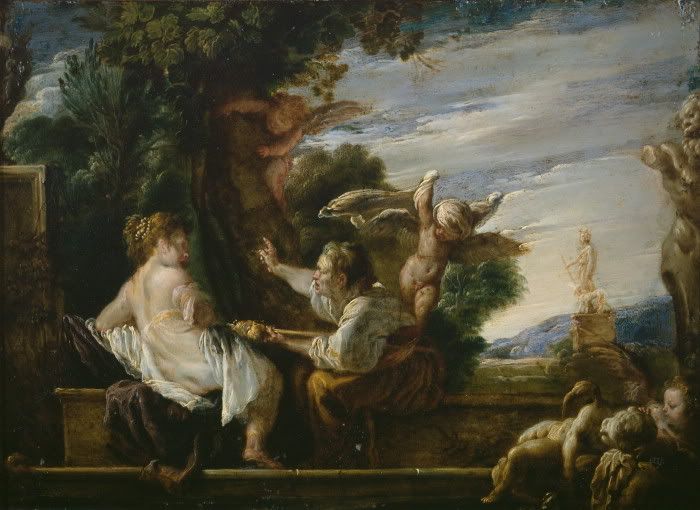
Fetti Domenico
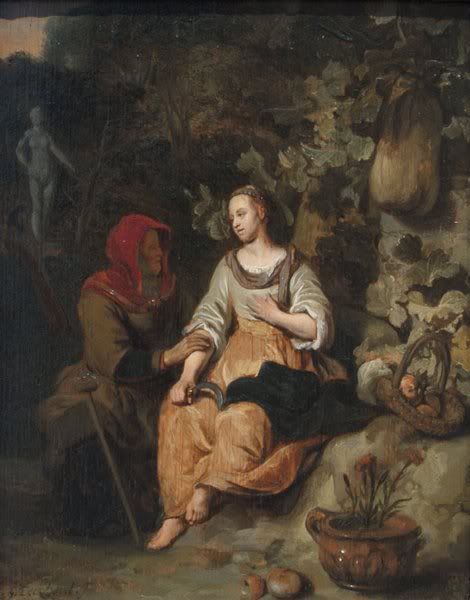
Gerbrand van den Eeckhout
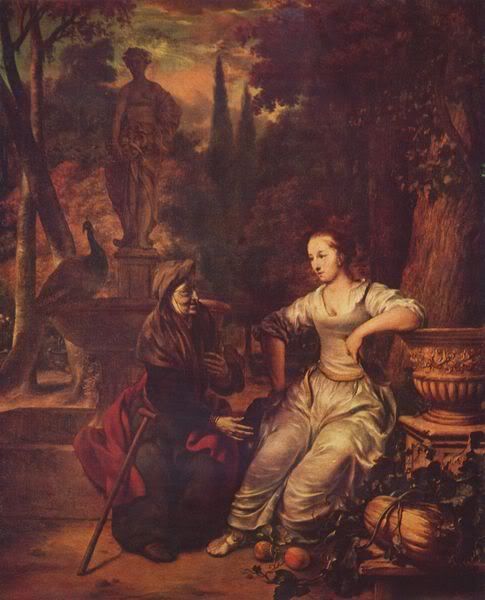
Gerbrand_van den Eeckhout

Cavalierd Arpino
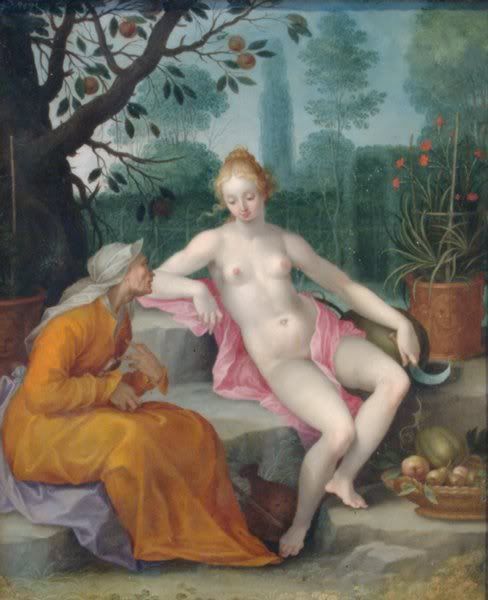
after Bloemaert Abraham
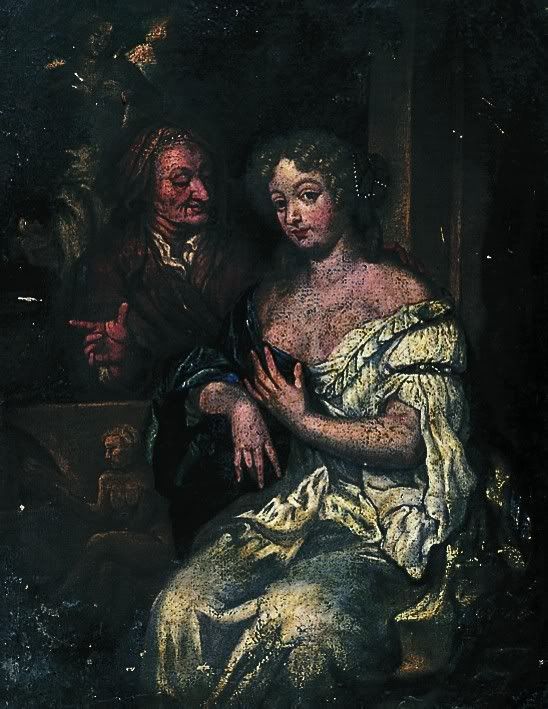
Beale Mary
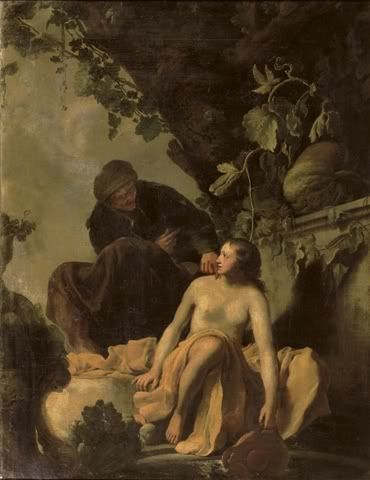
Circle Of Cornelis Holsteyn
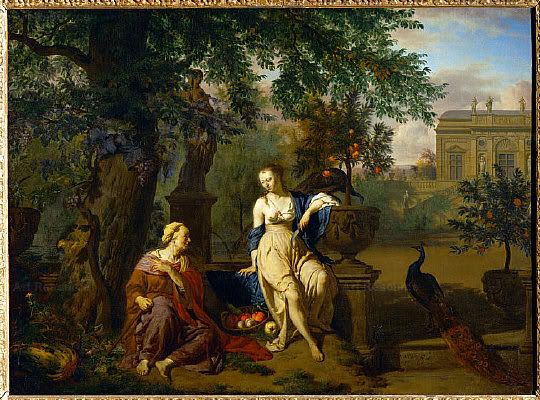
Velde Adriaenvande
Скульпторы чаще изображали Вертумна в виде юноши. вероятно им было интереснее ваять молодое красивое тело, чем фигуру старухи.
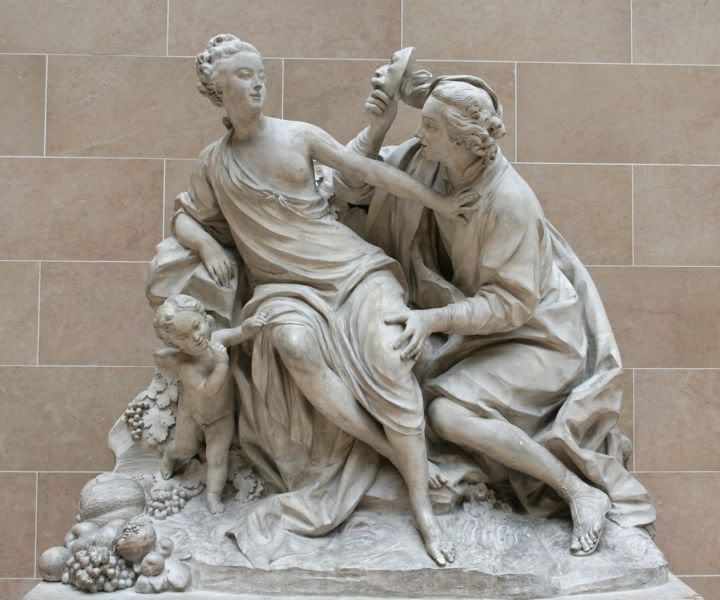
Jean-Baptiste Lemoyne
Посмотрите на зту картину. На ней изображена девушка и старуха, возможно сводня. Но не все так просто , как кажется на первый взгляд. Обратимся к мифологии.

Jean RANC
Девушка - это римская богиня плодов Помона.
А вот старуха.... Это Вертумн - римский бог смены времен года и осеннего созревания плодов, бог превращений и всяческих перемен ( в том числе и изменчивого настроения), который мог принимать любой образ. П У Овидия (см. Метаморф.) встречаем грациозный миф о том, как Вертумн добился взаимности Помоны, остававшейся холодной ко всем лесным ухаживателям. Вертумн прибегал сначала к разного рода превращениям, до старухи включительно, но победил П., только явившись в своем настоящем образе — светлого, как Солнце, юноши.
Сюжет мифа был весьма популярен. Вот еще несколько картин.


Teniers Davidthe Elder


Francesco Melzi.

Tengnagel Jan

Franois Boucher
In 1748, Boucher received a commission from the Director of the Royal Apartments for a set of paintings representing the four elements. Two were completed. "Arion carried on a Dolphin accompanied by Triton and Nereids and other Sea Gods" represented water. This picture of Vertumnus and Pomona surrounded by trees, flowers and fruits, was to illustrate earth.
The story is a rather obscure one which was given its best known form in Ovid's Metamorphises. It concerns two Roman deities: Pomona a nymph who loved to tend her fruit trees and flowers shut herself up in a garden away from all human and divine lovers. Vertumnus, the god of orchards, desired her passionately and tried various ruses to enter her garden. At last, disguised as a very old woman, he is granted admission, where he begins to woo the nymph by praising her beauty and her fruit.
Passionately he compares his plight with an elm tree which was intertwined with vines bearing grapes. If the tree stood alone, Vertumnus argued, the vine would have nowhere to go and the grapes would be trampled under foot. "You shun marriage and do not care to be wed," so he the god of the orchards cannot bear fruit without her help. His words melt the nymph's heart and they are united.
In Boucher's painting, the symbol of deception, through which love achieves its fulfillment, is the mask held by winged Cupid at his feet. Boucher's inspiration for using this story to represent earth in his commission came from a ballet performed at Versailles in January 1749. Boucher was probably the designer of the sets, and Madame de Pompadour played the role of Pomona. Once again, the features of the beautiful nymph are those of Boucher's patron.

Fetti Domenico

Gerbrand van den Eeckhout

Gerbrand_van den Eeckhout

Cavalierd Arpino

after Bloemaert Abraham

Beale Mary

Circle Of Cornelis Holsteyn

Velde Adriaenvande
Скульпторы чаще изображали Вертумна в виде юноши. вероятно им было интереснее ваять молодое красивое тело, чем фигуру старухи.

Jean-Baptiste Lemoyne